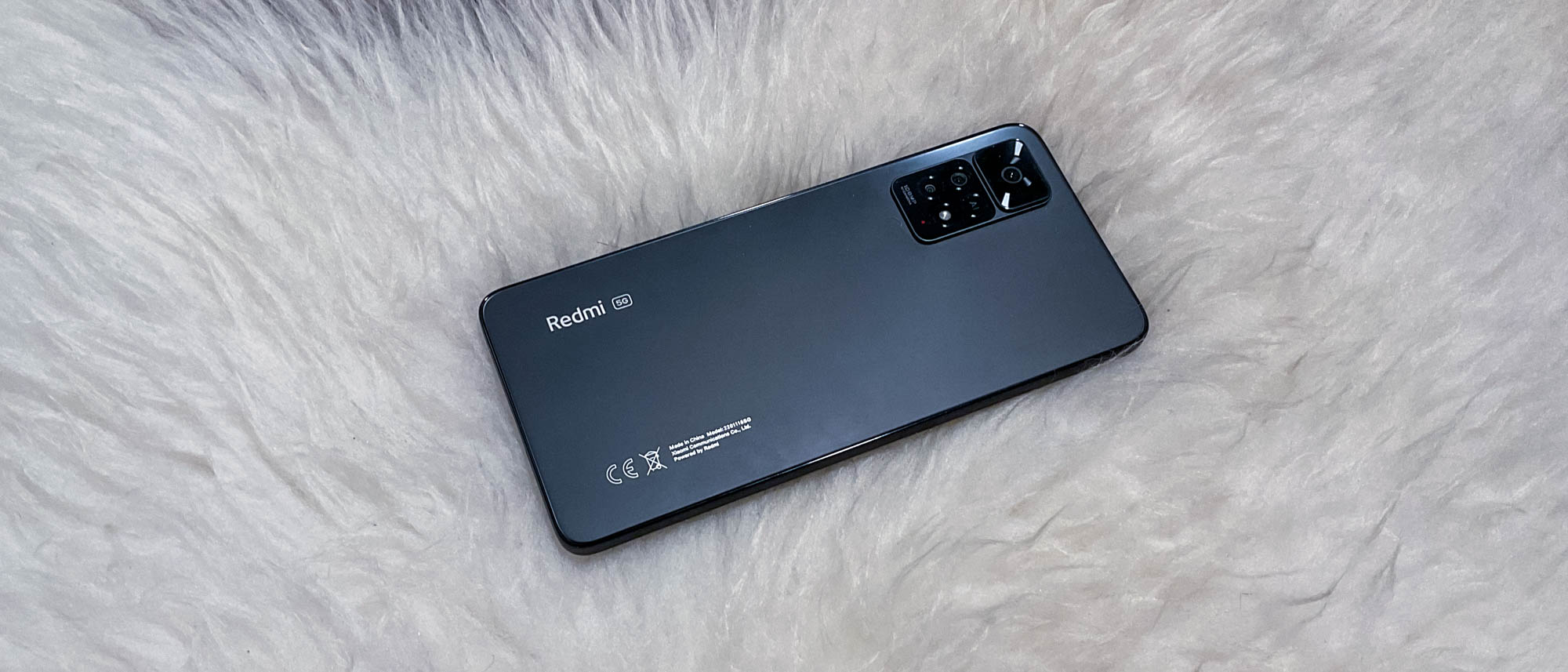Laptop Mag Verdict
The Xiaomi Redmi Note 11 Pro 5G stuns with flagship features at a modest $329 that puts pricer smartphones to shame.
Pros
- +
Stunning 120Hz AMOLED display
- +
Great performance for price
- +
Good battery life
- +
Bargain price tag
- +
5G support
Cons
- -
Comes with Android 11
- -
No 4K video
Why you can trust Laptop Mag
Price: $329 (around £240)
OS: Android 11/ MIUI 13
Display: 6.6-inch 120Hz FHD+ AMOLED DotDisplay
CPU: Qualcomm Snapdragon 695 5G
RAM: 8GB
Rear cameras: 108MP wide (f/1.9), 8MP ultrawide (f/2.2), 2MP macro (f/2.4)
Front camera: 16MP (f/2.4)
Storage: 128GB
Battery: 5,000mAh
Size: 6.4 x 2.9 x 0.3 inches
Weight: 7.1 ounces
Pro-grade cameras. 120Hz AMOLED displays. All-day battery life. These are buzzwords that set off endorphins for anyone chasing the pinnacle of modern smartphone technology. We’ve seen these terms thrown around progressively each year, with Apple’s iPhone 13 models, Samsung’s Galaxy S22 series, and Google’s Pixel 6, being the latest culprits. The caveat? A costly price tag.
Then you get Xiaomi waltzing in with the Redmi Note 11 Pro 5G, throwing around the same flagship features, singing “It’s not about the money (money, money).” Jessie J’s “Price Tag” is a fitting anthem for Xiaomi’s latest Redmi smartphone, as you might as well forget about the $329 (around £245) price tag when looking at its 120Hz AMOLED DotDisplay, snapping shots on its 108MP primary camera, and snappy charging speeds with a 67W turbo charger for its 5,000mAH battery.
Will it make the world dance? Not quite. The Redmi has a few caveats, including a basic MIUI 13 over an ageing Android 11 OS, along with camera features that aren’t so “pro-grade.” But that doesn’t mean you won’t be tapping your feet with everything else the Redmi Note 11 Pro 5G offers. This is easily one of the best budget smartphones, and you can read on to find out why.
Xiaomi Redmi Note 11 Pro 5G price and configurations
The Redmi Note 11 Pro 5G with 8GB of RAM and 128GB of storage is priced at an incredibly low $329 in the U.S., which works out to be around £245 in the U.K. That’s astounding, even when comparing it to some of the other top budget smartphones on the market today. To put its price into perspective, you could grab three Redmi Note 11 Pros ($987) and it would still be cheaper than the base model iPhone 13 Pro Max ($1,099).
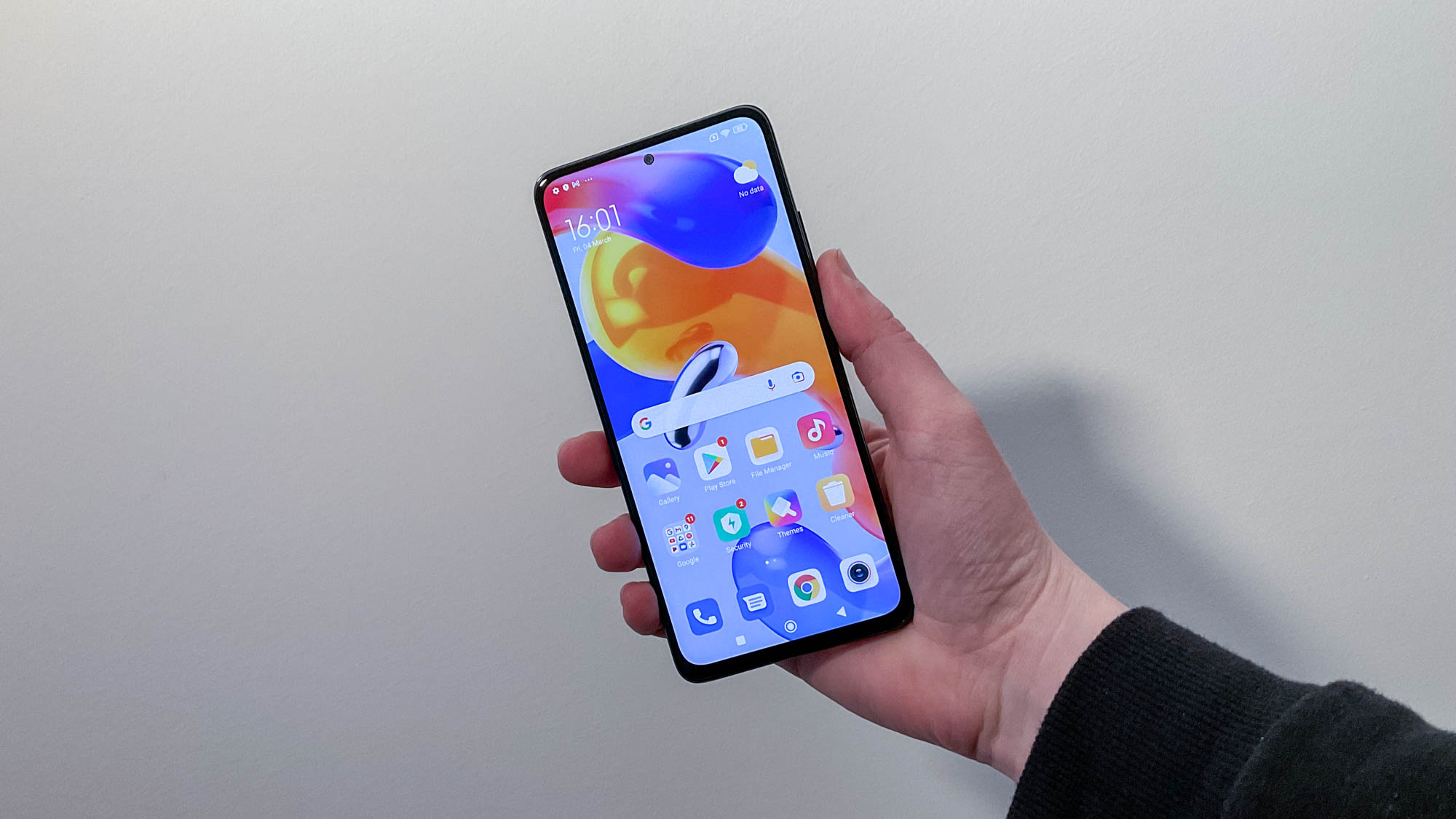
Currently, the Pro model isn’t available in the U.K., but those interested can check out the even more affordable £199 Redmi Note 11, although it doesn’t come with 5G connectivity.
Putting it in the ring against its competition, the Redmi Note 11 Pro knocks each of them out thanks to its dirt-cheap price. The £349 Realme 9 Pro+ comes close, especially with its 5G support and impressive performance, but the £389/$399 iPhone SE (2020), £399 (around $530) OnePlus Nord 2, and $499 TCL 20 Pro 5G are more mid-range compared to the Redmi Note 11 Pro.
Xiaomi Redmi Note 11 Pro 5G design
Truth be told, I had to double-check that it was the Redmi Note 11 Pro 5G in my hand while writing this review, and not the virtually identical Redmi Note 11. From the speakers at either end of the phone, to the side buttons, and the frame’s rounded edges, the Note 11 Pro may as well be the “Plus” version of the series in terms of design. This isn’t a bad thing, as Apple and Samsung do this with each iteration of their smartphone models as well.
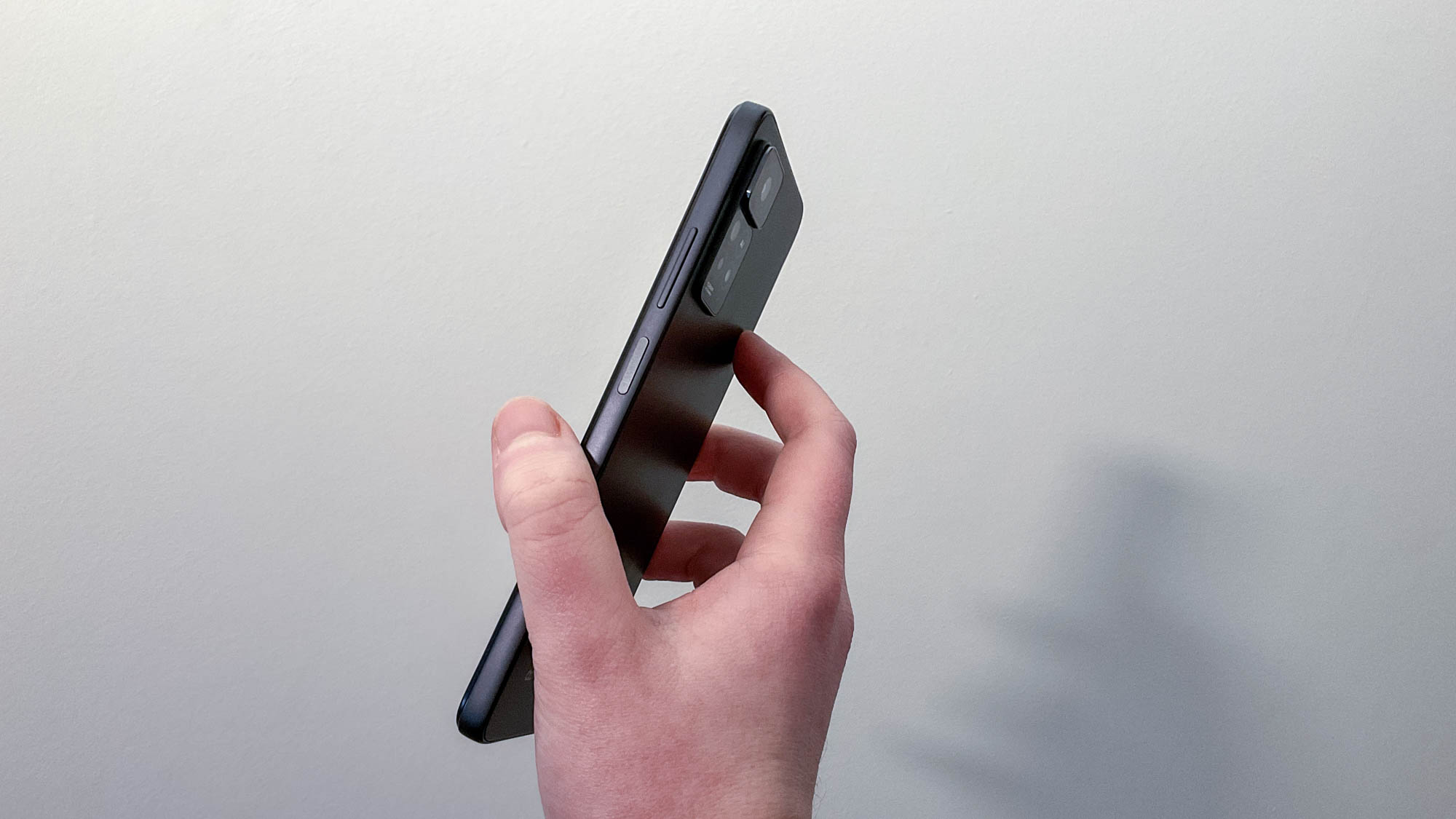
You can expect the same smooth rounded edges, a hole-punch camera placed at the top centre of the phone, along with a similar camera layout with a sizable lens sitting on top of the smaller lenses. This time, however, instead of a depth camera in the square-like formation of the smaller lenses (like in the Redmi Note 11), Xiaomi strangely replaced it with just the word “AI” in the circle where the lens should be. Does it do anything? Nope. If you’re not going to put something that would otherwise be a lens to good use, maybe just lose the lens altogether.
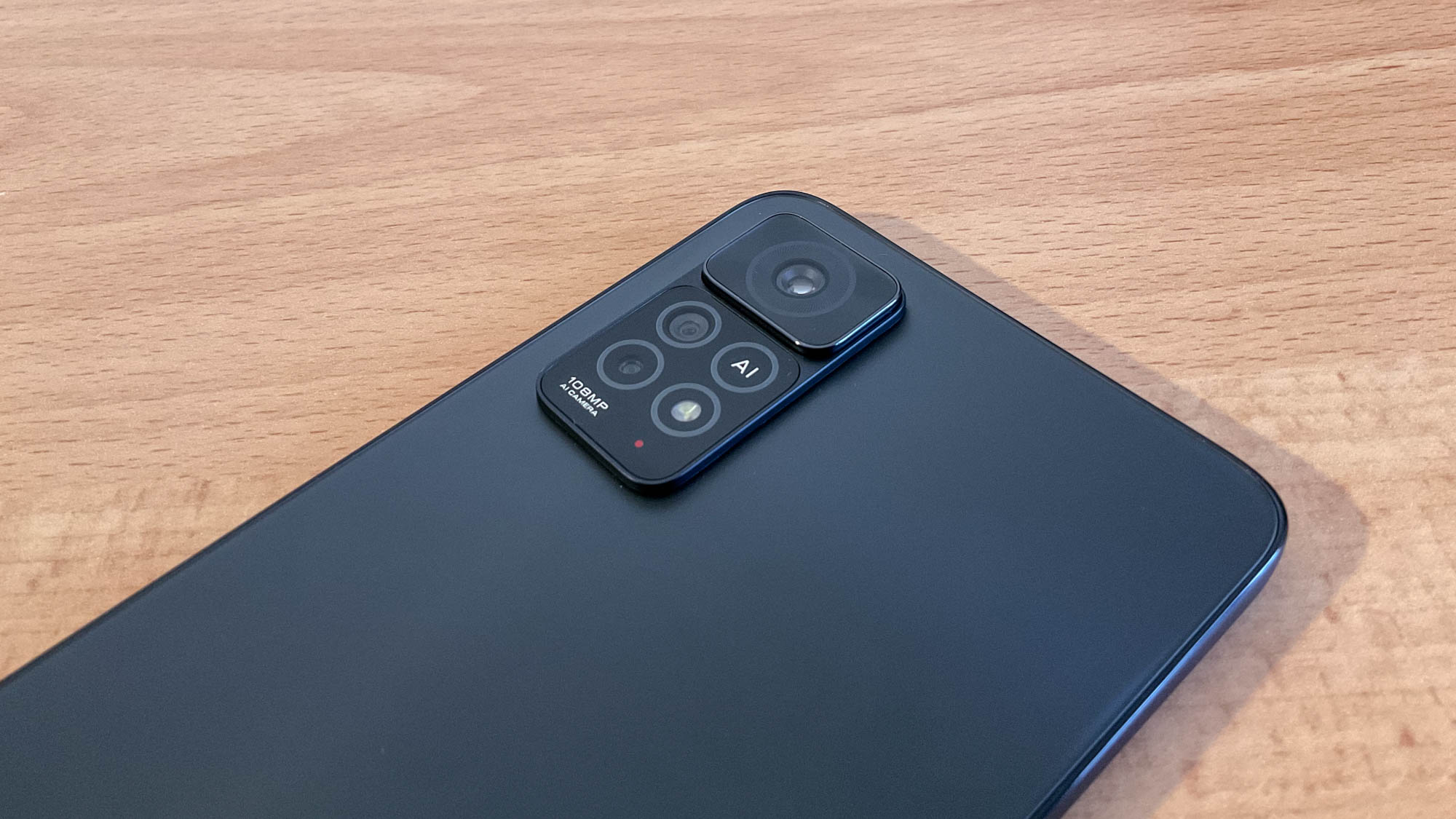
The Redmi Note 11 Pro comes in three colour variants, including Graphite Gray, Atlantic Blue and Polar White. We received the grey model, which sports a classy shine when it isn’t riddled with fingerprint smudges. However, smudges aren’t as apparent when compared to the plastic back cover on the standard Note 11, and I’m a fan of its subtle flagship style. On the other hand, there aren’t any distinct features that set it apart from any other Android phone on the market, except for the plain “Redmi” logo on the rear of the phone.
The Note 11 Pro is also equipped with a fingerprint sensor embedded in the side power button. It’s accurately placed, making it easy for me to put my thumb on the button and unlock it without a second thought. Plus, the recognition is super snappy. It’s bulkier than its Note 11 sibling, but it’s still comfortable to hold despite being noticeably heavier.
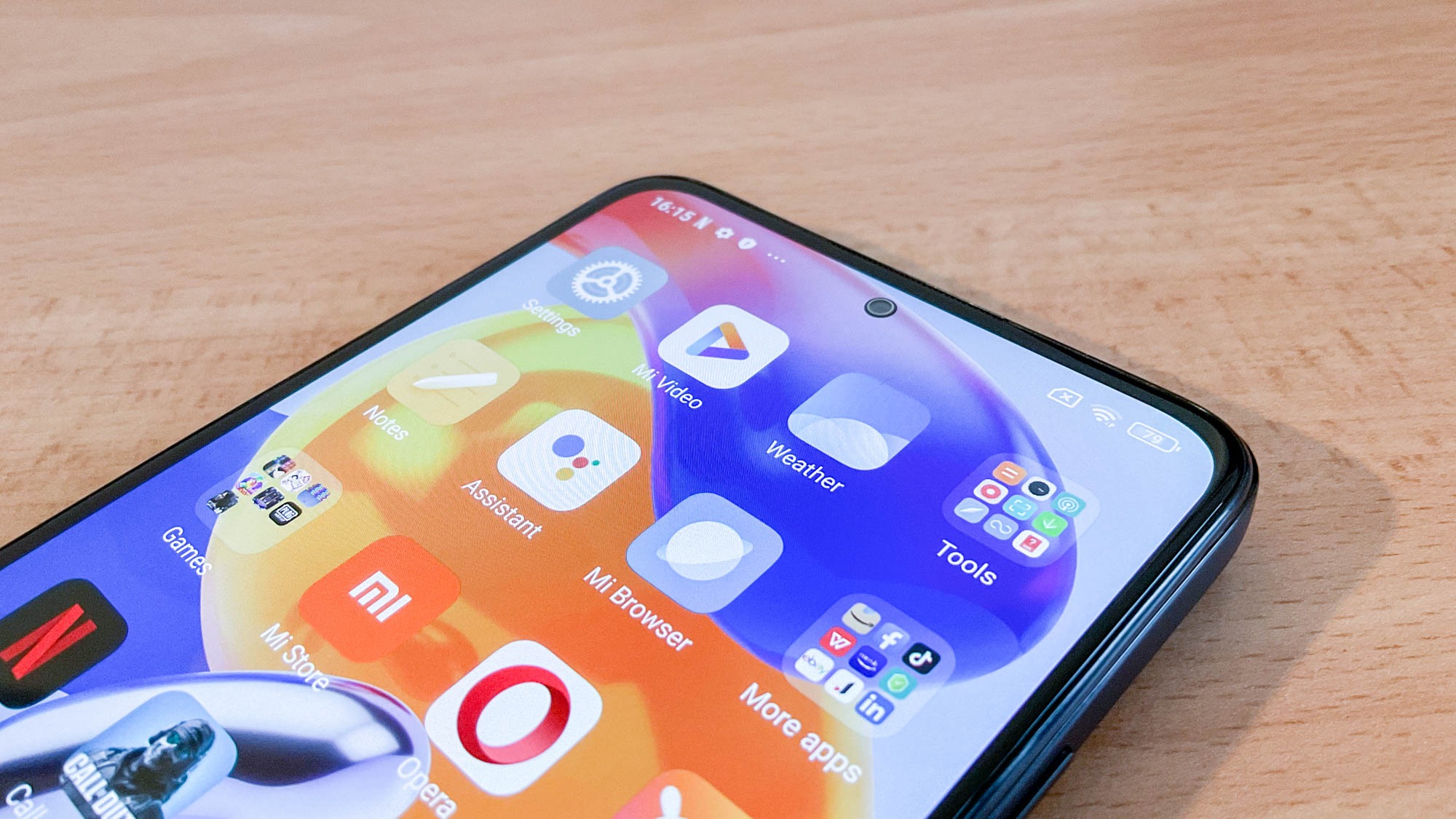
With dimensions of 6.4 x 2.9 x 0.3 inches and weighing 7.1 ounces, the Redmi Note 11 Pro 5G is slightly chunkier than the near-identical Redmi Note 11, and heavier than the 6.8-ounce Redmi Note 10 Pro. It’s bigger and heavier than its competition, too, including the OnePlus Nord 2 (6.3 x 2.9 x 0.32 inches, 6.7 ounces) and TCL 20 Pro 5G (6.5 x 2.87 x 0.35 inches, 6.7 ounces). It’s understandable that the Note 11 Pro takes more of a brick-ish design, with the upgraded specs Xiaomi crammed in under the hood, and if you’re after a Pro series smartphone, chances are you’re comfortable with having a bigger smartphone in your pocket.
Xiaomi Redmi Note 11 Pro 5G display
Equipped with a stunning 6.6-inch 120Hz FHD+ (2400 x 1080) AMOLED DotDisplay, you’ll get more than your money’s worth with this feature alone in the Redmi Note 11 Pro 5G.
As you might expect, the 120Hz refresh rate offers buttery smooth scrolling and website navigation. It’s easy on the eyes, especially when I was slowly reading through articles. The faster refresh rate isn’t on by default when booting up the phone, as the battery does take a hit with it on, albeit not by that much. The default option is 60Hz, which is fine if you’re not in need of extra juice.
The good news is there are a few more display options to customise, including different colour schemes such as the “Vivid” option that adjusts colours based on the content being displayed. With a DCI-P3 wide colour gamut (Xiaomi doesn’t offer a percentage) and 395 ppi, images shown are colourful and sharp, which is ideal for when watching content.
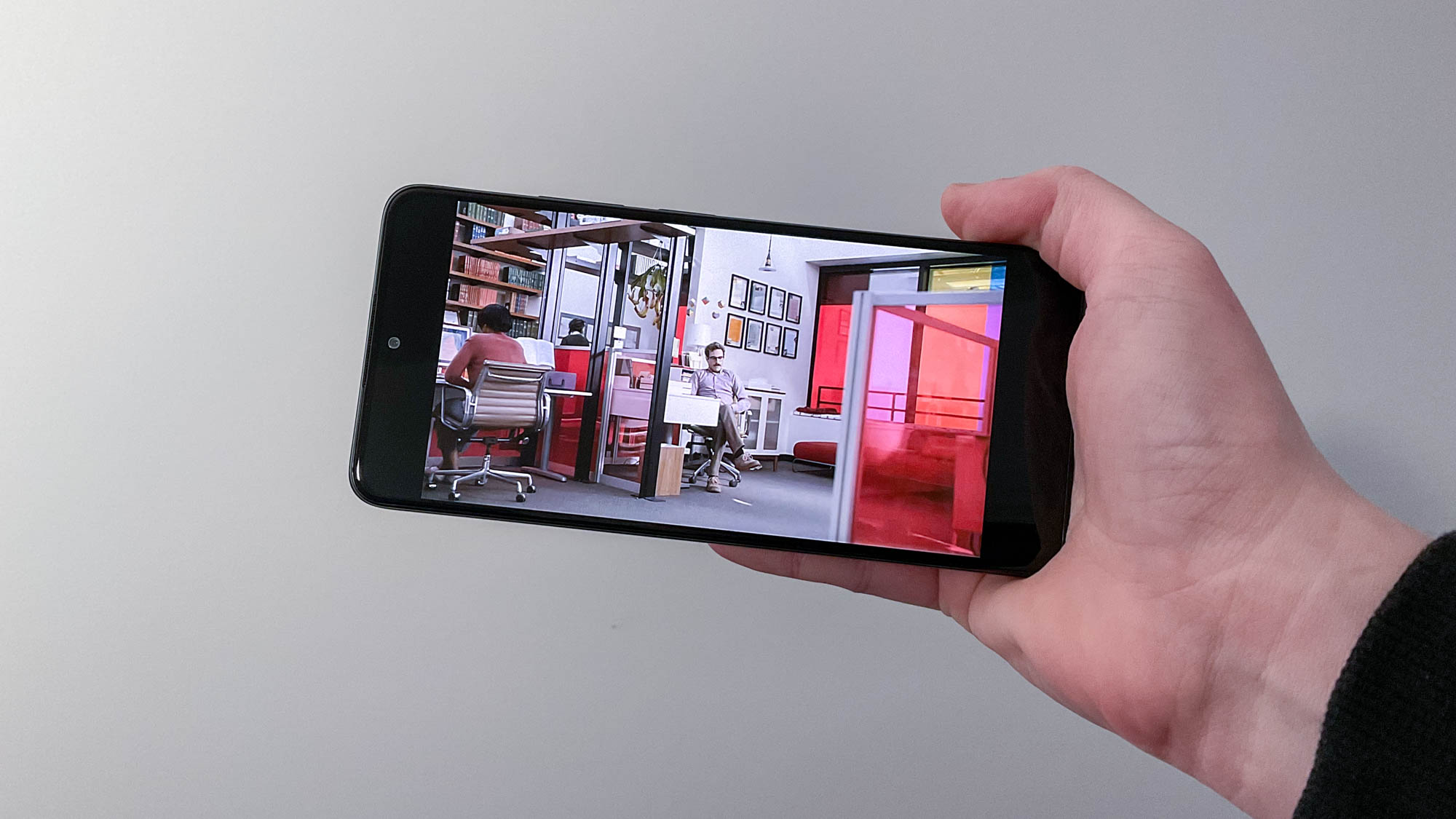
Spike Jonze’s bizarre sci-fi love story Her was recently added to Netflix, and I was completely engaged by the vibrant shades of red spotted throughout the movie. The Note 11 Pro does a great job at capturing the subtle details of the somewhat futuristic corporate world Theodore (Joaquin Phoenix) finds himself in, and it was a joy to watch on the 6.6-inch screen. Not bad at all for a $329 smartphone.
The display isn’t exactly edge-to-edge, as there is a slight chin on the bottom of the phone. Plus, the hole-punch camera can be slightly galling when playing games such as Call of Duty: Mobile. These are only minor issues, as they don’t ruin the overall viewing experience.
Xiaomi Redmi Note 11 Pro 5G audio
With dual stereo speakers placed at either end of the smartphone, the Redmi Note 11 Pro 5G does an efficient job at offering crisp and clear audio. Most prefer to use headphones on their smartphone, however, and you’ll be happy to know the Note 11 Pro sports a 3.5mm audio jack. Audio is always hit-or-miss in bargain smartphones, so I was chuffed with the Hi-Res standard audio the speakers could dish out.
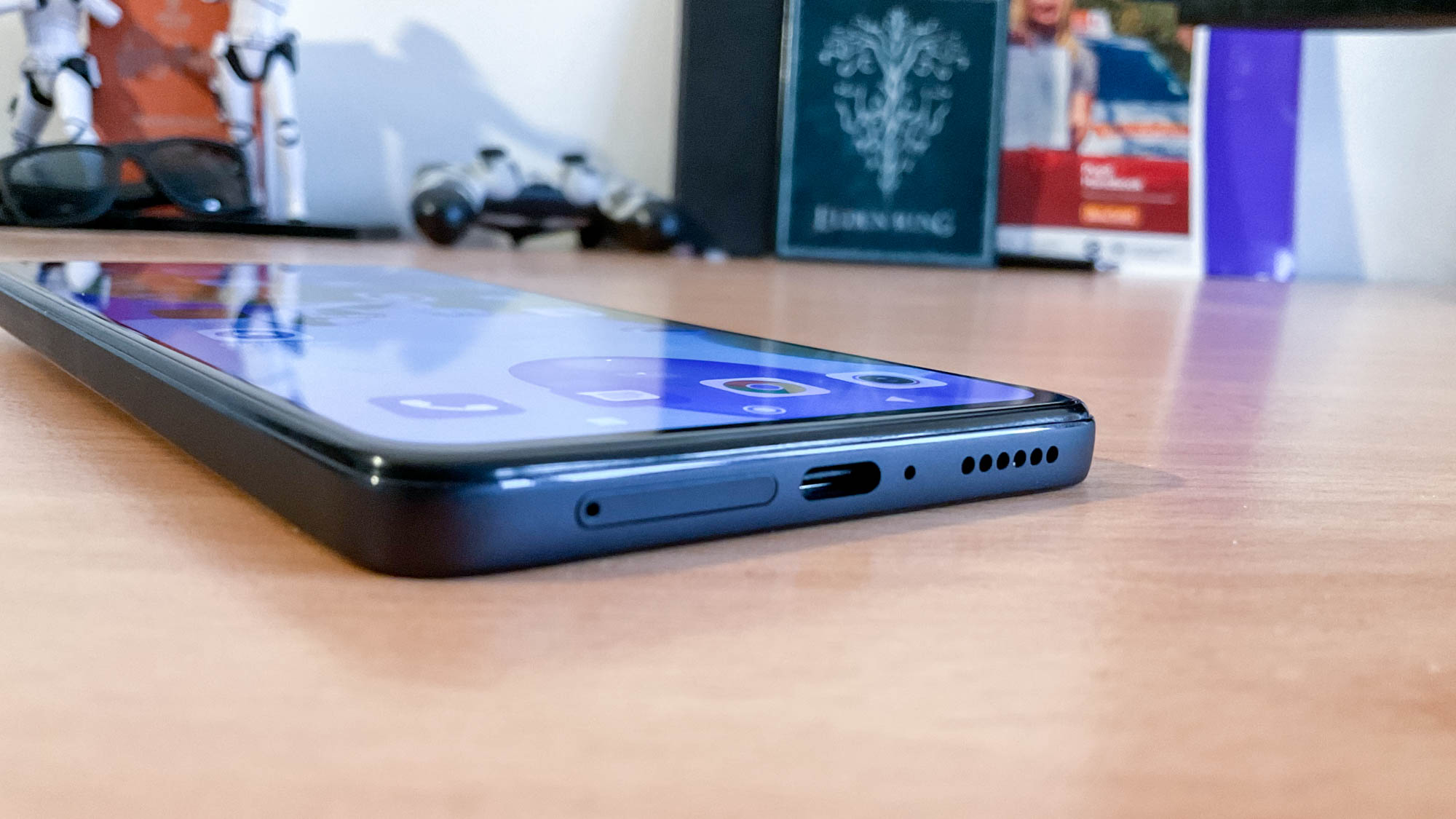
I brought up Jessie J’s “Price Tag” before, so of course I threw on the tune. Jessie J’s upbeat voice was loud and clear with her cha-ching cha-chings, while the shuffling of the drums and clattering hi-hat played alongside the feel-good guitar strums may just make the world dance through these speakers.
To compare it to the speakers on the Note 11, I jammed to Tiesto & Ava Max’s “The Motto” again. Low and behold, I got the same results. I cranked up the volume to jam to the trending dance tune, and while the melody was satisfying, there wasn’t much bass to really give the song the “oomph” it strives for. Understandable, though, seeing how these are simple dual stereo speakers.
Xiaomi Redmi Note 11 Pro 5G performance
With a Qualcomm Snapdragon 695 5G processor with a Qualcomm Adreno 619 GPU, 8GB of RAM and 128GB for storage, I set my expectations relatively low in regards to performance on the Redmi Note 11 Pro 5G. It managed to easily clear the low hurdle I set for it and I was still thrilled to see admirable results in both real-world and spec testing.
To put it to the test, I opened a couple of dozen active Google Chrome tabs while watching Her on Netflix in a small window. I also slipped between the Chrome tabs and Call of Duty: Mobile to see how fast it could switch between the two. Even when I had the Netflix window playing and another video running in a tab, I didn’t experience any slow down. However, the frame rate seemed to take a hit, as scrolling through a web page became more jittery. Once I hit the 24 tab mark, I did see a slowdown in other web pages loading up, but only by a couple of seconds. All in all, the Redmi Note 11 Pro has plenty of multi-tasking potential.
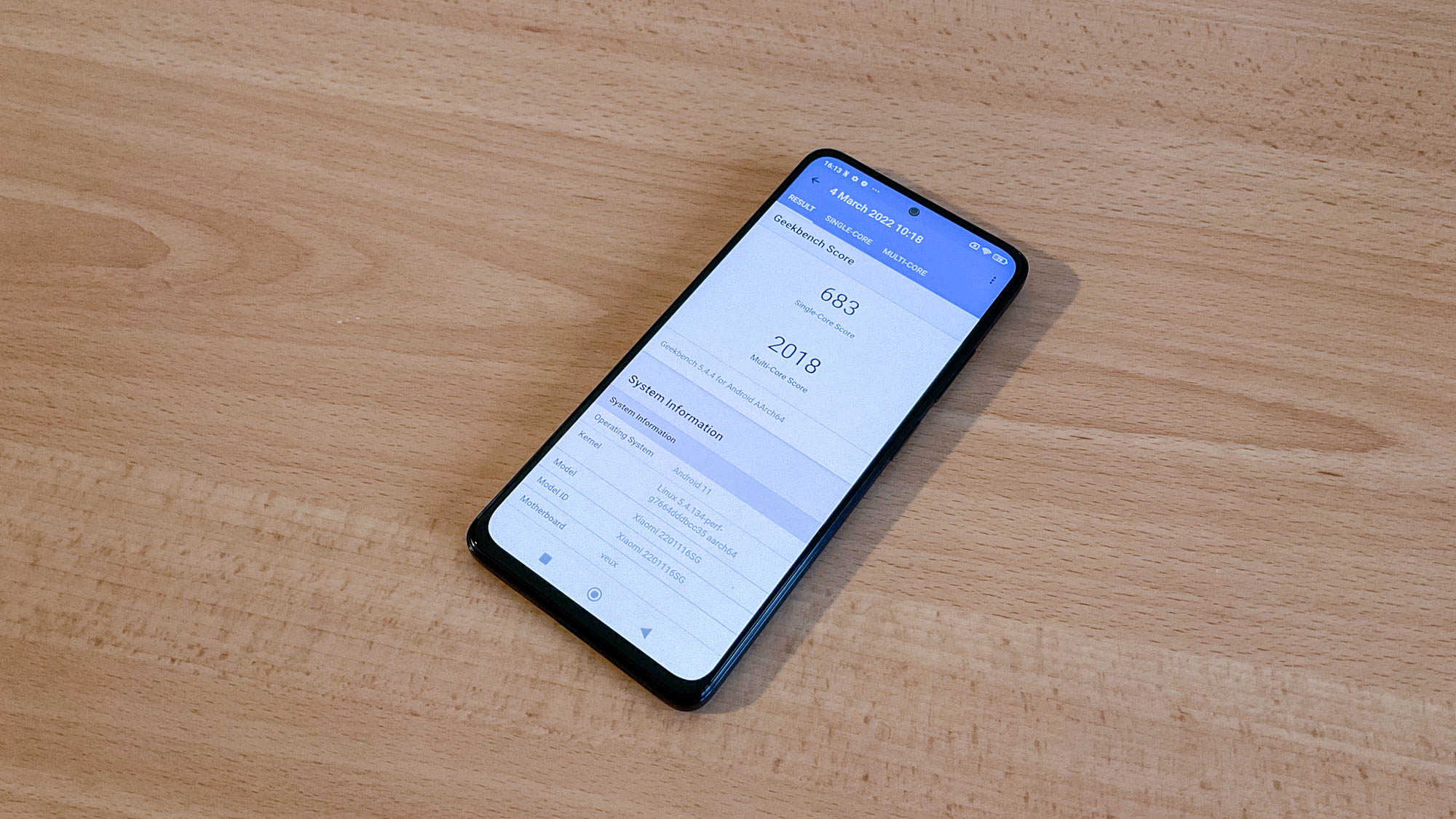
I was also impressed with the results in the Geekbench 5 test, especially considering its price tag. The Redmi Note 11 Pro delivered a multi-core score of 2,018, which places it smack in the middle of its competition. The Realme 9 Pro+ (MediaTek Dimensity 920 5G, 2,318) and OnePlus Nord 2 (Mediatek Dimensity 1200-AI, 2,697) flew past the Note 11 Pro, but it beat the Samsung Galaxy A52 (Snapdragon 720G, 1,903) and the TCL 20 Pro 5G (Snapdragon 750G, 1,922). All of these trample over Google’s Pixel 5a (Qualcomm SM7250 Snapdragon 765G 5G, 1,354).
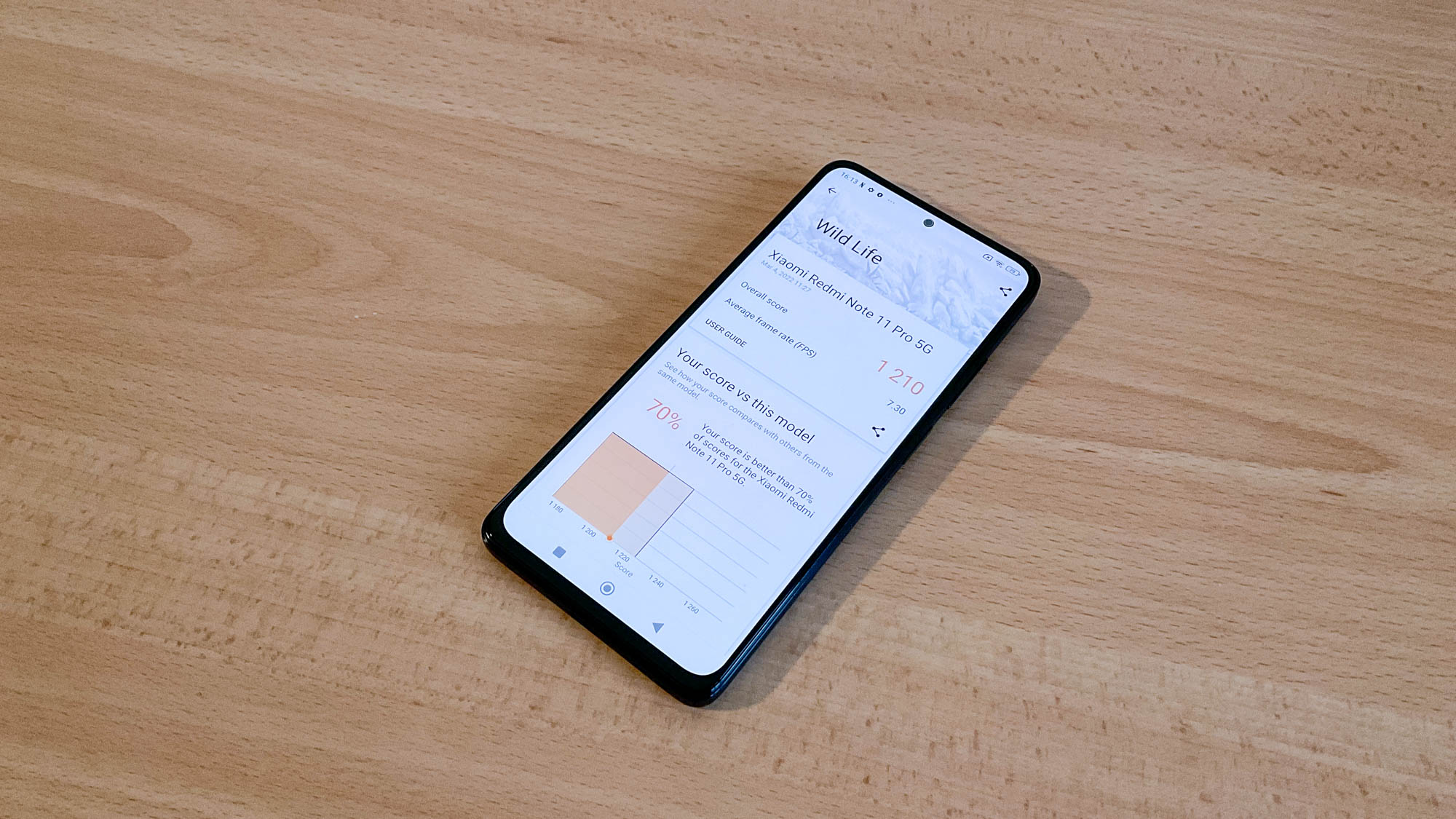
In the 3DMark WildLife Unlimited test, the Redmi Note 11 Pro clocked an overall score of 1,210 with an average frame rate of 7.3 frame per second. This isn’t amazing, but it certainly beats the Redmi Note 11 (443, 2.7 fps). It’s also better than the TCL 20 Pro 5G (6.7 fps) and Galaxy A52 (6.6 fps), but falls behind the Realme 9 Pro+’s 13.8 fps. To put that into context, the Samsung Galaxy S22 busted out 60 fps.
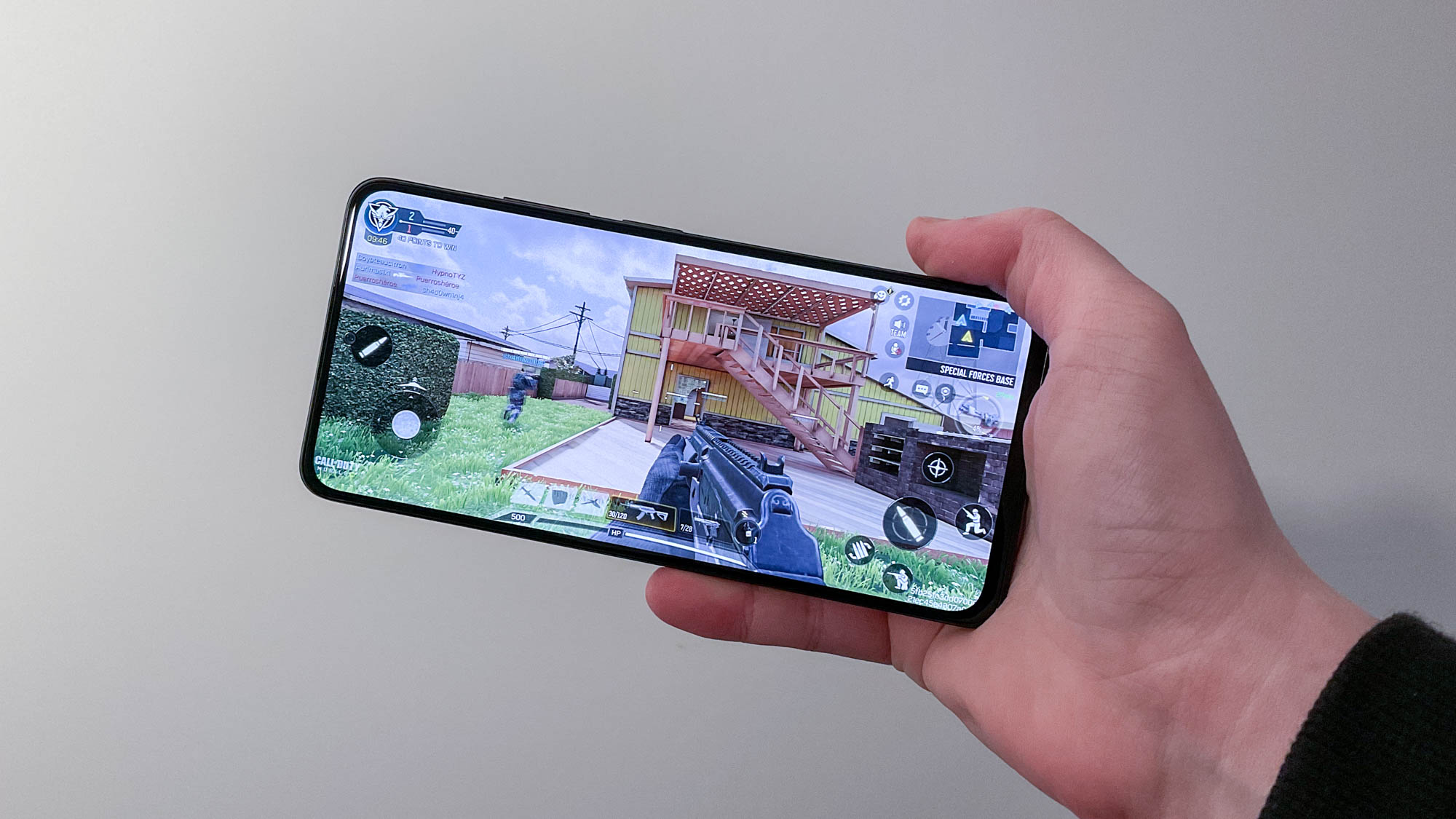
For gaming, the Redmi Note 11 Pro has a “Gameturbo” menu that lets users take screenshots, record, free up space, and switch to “Performance mode” for a better experience — but it does drain the battery. Playing a team deathmatch in Call of Duty: Mobile was a joy, as I was pinpointing headshots and running around the map to scope out new enemy threats without any hiccups. Running on high graphics quality and max frame rate, you can get a considerable amount of high-quality gaming done on this phone.
Xiaomi Redmi Note 11 Pro 5G battery life and charging
Hello, 5,000mAh battery capacity. We hear you can get through a whole day without a lick of charging. Does this hold up with the Redmi Note 11 Pro? For the most part, yes, but you may need to plug in its 67W turbocharger for a quick boost after heavy use.
With a 120Hz refresh rate, a display that claims to go up 1,200 nits of peak brightness, the optional performance mode, and 5G connectivity, the battery is bound to take a hit if these features are all used frequently. Still, I was thrilled to see the Note 11 Pro’s battery only go below the 10% margin after nearly a full day (just under 14 hours) of heavy usage. This included watching YouTube videos and Netflix shows, playing Call of Duty: Mobile, scrolling through social media, video calls, snapping pictures and shooting video.
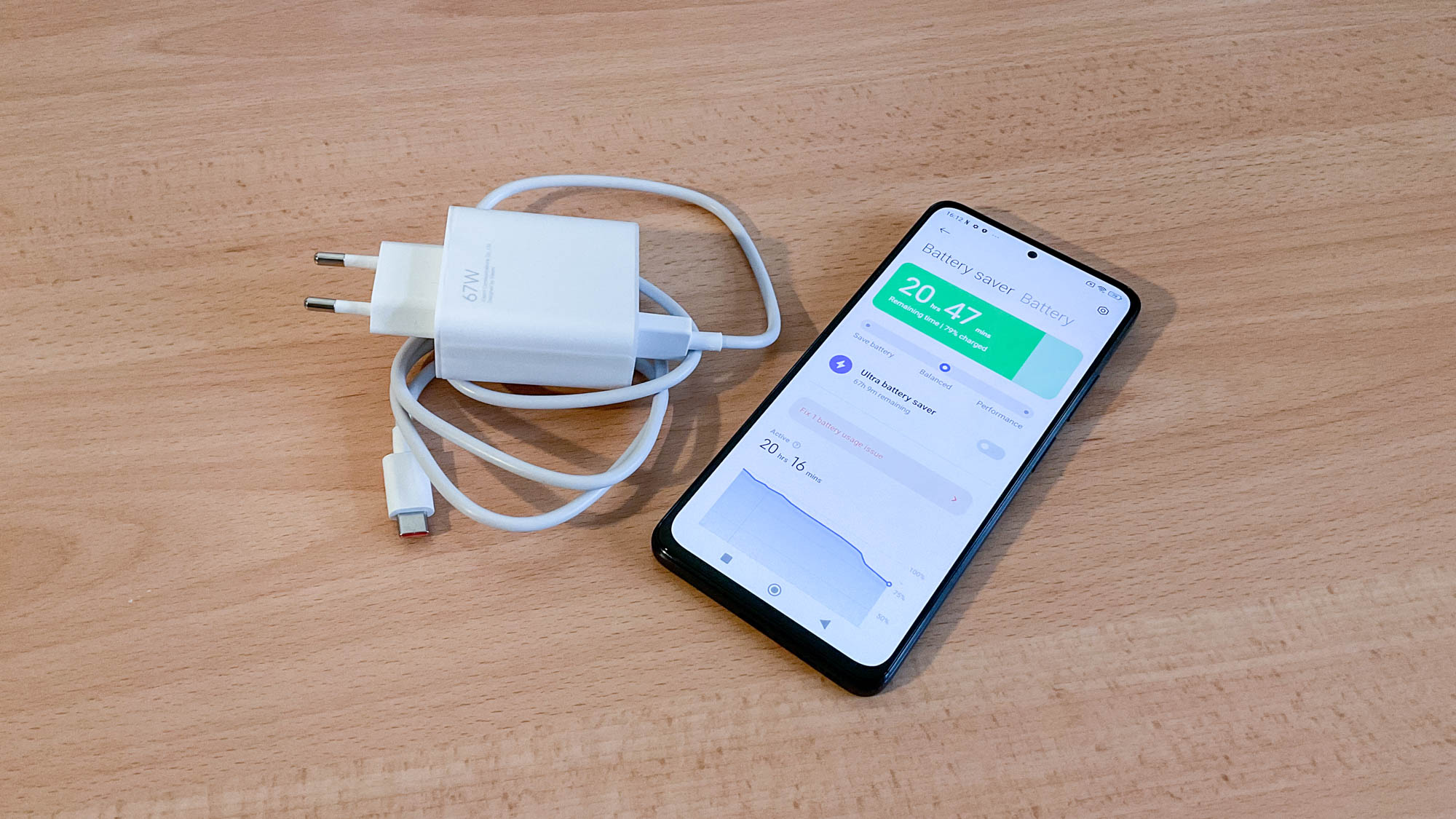
With moderate use, the Note 11 Pro could easily go over a day without needing a quick charge. Speaking of, those charges are zippy. Xiaomi claims the phone can charge to 50% in just 15 minutes. I found the time was closer to around 19 minutes, which isn’t bad at all. From 0% to 100%, it took just over 45 minutes to max out, rather than the 42 minutes Xiaomi states. Overall, that’s enviable charging speeds, especially if you need a quick boost before heading out the door.
The Redmi Note 11 Pro also boasts an “Ultra battery saver mode,” which nearly quadruples the amount of battery life you can save, along with a less intensive “Save battery” option that restricts certain apps from functioning in the background — saving me at least another five hours.
Xiaomi Redmi Note 11 Pro 5G cameras
Fulfilling its role as a “Pro-grade” smartphone, Xiaomi has equipped the Redmi Note 11 Pro 5G with a 108MP wide camera armed with a 2.1μm pixel (combining nine 0.7μm into one 2.1μm pixel with binning technology) and 1/1.52-inch sensor size. That’s the only real upgrade when compared with its Note 11 sibling, as the Pro model sports the same lenses and, unfortunately, just 1080p at 30 fps video recording capabilities.
Altogether, the Note 11 Pro has a 108MP wide with an f/1.9 aperture, 8MP ultra-wide (118-degree angle) with f/2.2, and 2MP macro with f/2.4, along with a 16MP with f/2.4 aperture on the front. That’s identical to its predecessor, but this time there isn’t any depth lens. That’s hardly a blow, seeing as the main shooter is the real star of the show.



Going for a stroll through my local park and canal on a wet day (the usual during this time of year in the U.K.), I tested the camera’s capabilities on the different greenery spotted throughout my walk. I was very impressed by the detail captured in the objects in focus, especially the yellow flowers surrounding the base of a tree. Colors are accurate, and despite it being a day with no sun in sight, I captured a bright shot with clear contrast between light and dark areas. I could further control this in the Note 11 Pro’s “Pro” mode, letting me mess around with the ISO, shutter speed, lens type and more. For a bargain price, you can take some great snaps with this phone.



As for the ultra-wide and macro lenses, they can capture some decent shots, but I did find colors weren’t standing out as much, while shots seemed too dark in certain areas. This is similar to the results I got with the Redmi Note 11, which is expected since they are the exact same lenses. Zooming in isn’t ideal either, as it becomes a pixelated, grainy mess.

With this being the Pro model, it’s disappointing to see video support maxing out at1080p at 30fps. This should be 4K, but that’s a reasonable sacrifice made on a phone this affordable. It’s fine for taking a video of a moment, but don’t expect it to be your main driver for capturing video. On the other hand, the 16MP front-facing camera can take some decent, bright selfies, even though they look a tad air-brushed. The good news is I didn’t experience any jittery movement as I did on the standard Redmi Note 11.
Xiaomi Redmi Note 11 Pro 5G software
This is where the Redmi Note 11 Pro 5G falters. Running MIUI 13 over Android 11, it’s disappointing to see it not come with Android 12. What’s worse, Xiaomi doesn't officially state the number of software updates for each of their phones, but the Redmi Note series generally only gets one major Android update. Still, Xiaomi has committed to extending Android updates for its recent line of phones, but it’s difficult to know if this applies to its Redmi Note 11 series. On the plus side, the Redmi Note 11 Pro comes with 5G connectivity, which is a major perk on a phone that’s just over the $300 mark.
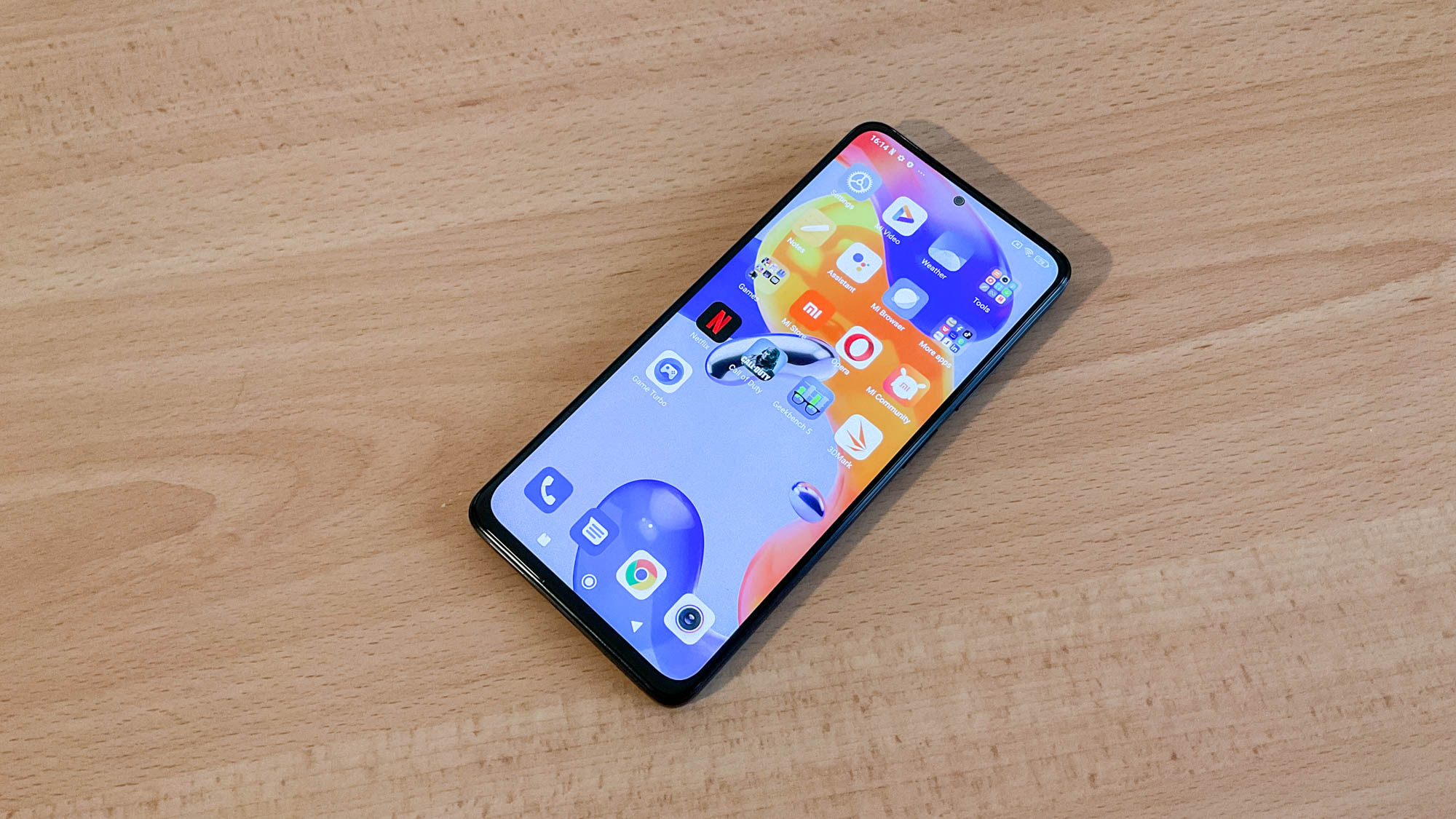
MIUI 13 isn’t anything special, offering the bare minimum of unique personalization tools and an interface that feels a tad dated. There is a boat-load of bloatware when starting up the phone, which is a nuisance. A majority can be deleted, but it’s annoying having them there, especially since they seemingly need constant updates.
Those looking at phones in this price bracket shouldn’t be fussed, however, seeing as there are still the usual Google apps such as Google Assistant, along with staple apps like the calculator, clock, recorder, and more. You’ll also find a bunch of Mi-centric apps that will largely go unused.
On the plus side, the Redmi Note 11 Pro comes with dual SIM and a microSD slot, along with AI face unlock and a fingerprint sensor on the side power button. You’ll also find edge lighting whenever you get a notification, which is a nice touch.
Bottom line
I'm not sure what Xiaomi has done in order to cut the cost down on its $329 Redmi Note 11 Pro, but it’s not apparent in the form or function of this stellar budget smartphone. With decent performance, a quality 108MP main shooter, a stunning 120Hz AMOLED display and fantastic battery life, the Redmi Note 11 Pro raises the bar on what a more affordable Android smartphone can do — putting some flagship smartphones to shame.
Not everyone will get full use out of flagship smartphones like the iPhone 13, Samsung Galaxy S22 or Pixel 6, so it’s understandable they turn to the budget smartphone market. But the people that do will be pleasantly surprised with the flagship perks phones like the Redmi Note 11 Pro deliver anyway, albeit at a subpar level in some departments such as processing power, OS sustainability and camera capabilities.
Regardless, you’d be hard pressed to find a more affordable smartphone option with these specs, and the phone cover that Xiaomi throws in with the Redmi Note 11 Pro is just the icing on the cake. If you’re after an even more affordable model, check out our Redmi Note 11 review, along with the best budget smartphones in the US and best budget smartphones in the UK that won’t put a dent in your wallet.

Darragh Murphy is fascinated by all things bizarre, which usually leads to assorted coverage varying from washing machines designed for AirPods to the mischievous world of cyberattacks. Whether it's connecting Scar from The Lion King to two-factor authentication or turning his love for gadgets into a fabricated rap battle from 8 Mile, he believes there’s always a quirky spin to be made. With a Master’s degree in Magazine Journalism from The University of Sheffield, along with short stints at Kerrang! and Exposed Magazine, Darragh started his career writing about the tech industry at Time Out Dubai and ShortList Dubai, covering everything from the latest iPhone models and Huawei laptops to massive Esports events in the Middle East. Now, he can be found proudly diving into gaming, gadgets, and letting readers know the joys of docking stations for Laptop Mag.
